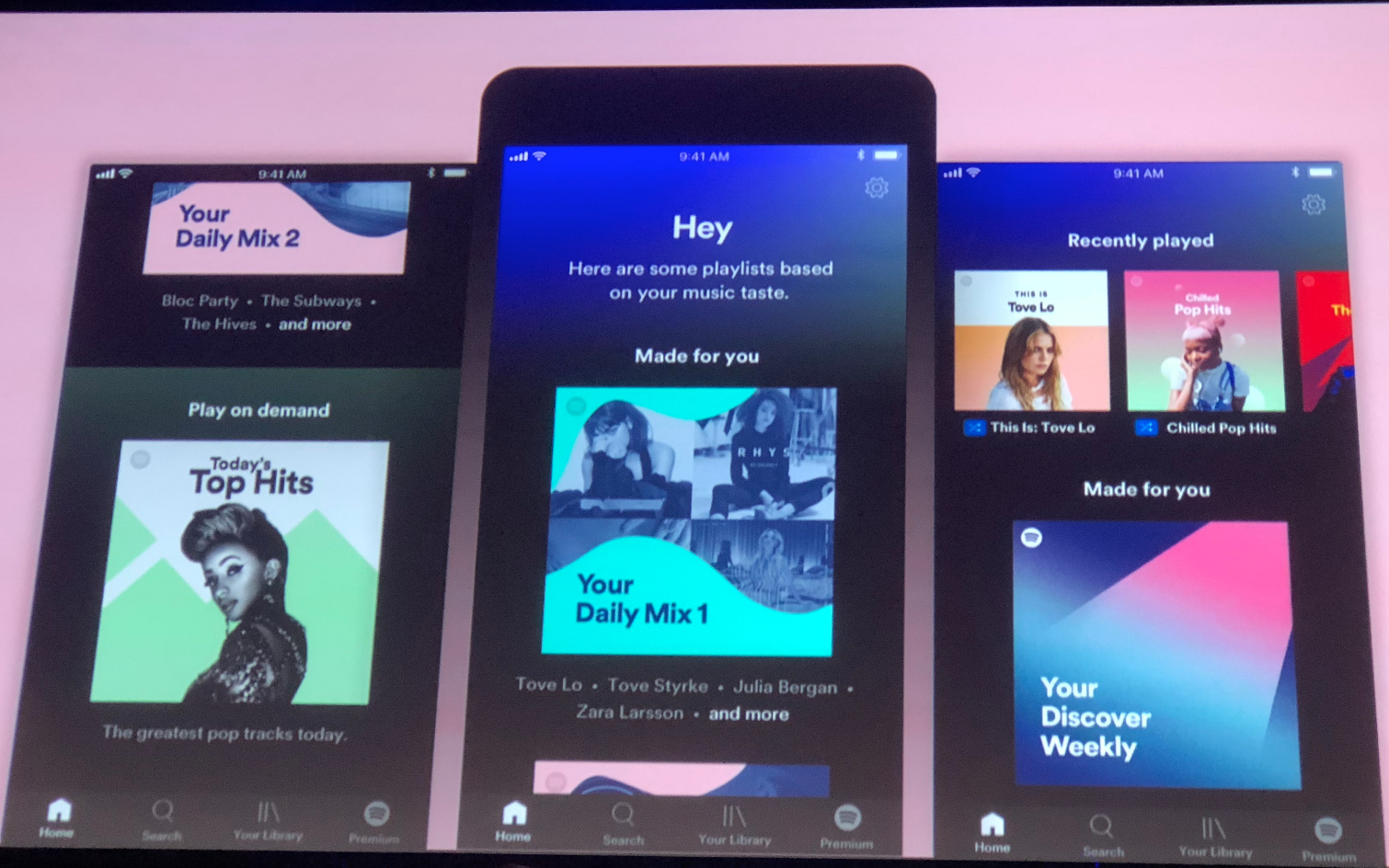Spotify's Free Mobile App Just Got a Huge Upgrade
You'll have greater playlist control, a new data saver tool and other additions if you use Spotify for free on your mobile device.
NEW YORK — Spotify's free version just got a hell of a lot better on mobile. Spotify says it's giving users of the free version of the music streaming service more control over how they listen, the option to stream on their mobile devices without using as much data and greater personalization.

These features were detailed today (April 24) by Babar Zafar, the vice president of product development, who explained how the company believes these features will grow Spotify's free user count, which, in turn, creates more paying users. These changes are rolling out right now globally, reaching 90 million users in the coming weeks.
MORE: Spotify Free vs Premium: Should You Pay to Play?
One of the biggest change coming for free users of Spotify is that now they have 15 playlists that they'll get to use in whatever way they prefer. This means you can pick the song you want to start with, without relying on the musical Russian Roulette game of hitting shuffle as often.
This set of 15 playlists include the personalized playlists Discover Weekly, Daily Mix and Release Radar, as well as user favorites '80s Workouts and Rap Caviar. This ability to play songs as you prefer will give users more freedom to actually experiment with what they listen to, Zafar said.

And for the other playlists — the ones you have less control over — which you'll identify by a blue shuffle logo, users will gain some additional control there too.
At a hands-on demo area, I saw how you can edit the songs that appear in Spotify's playlists. After opening a playlist, tap on the list of names above the tracks, which you can tap a heart icon to Like or a dislike button so that they don't appear when you're listening on shuffle.
Sign up to get the BEST of Tom's Guide direct to your inbox.
Get instant access to breaking news, the hottest reviews, great deals and helpful tips.

Personally, that's a huge feature, because I used to stay away from playlists when I saw they had artists I knew I didn't like.
Spotify's also aware that the mobile experience hasn't changed since the app launched in 2014, and that data caps play a huge role in what you listen to. The original version of the app existed more for adding songs via Wi-Fi than it did for listening to songs on the go.
By proactively caching songs based on past listening and optimizing the streaming process, Spotify says its new Data Saver feature will save up to 75 percent of data usage, so you can listen without Wi-Fi and not worry about burning through your data plan.
In terms of cached tracks, Spotify will give users the ability to limit or clear those cached files if they discover the Spotify app is taking up more space on their phone then they want it to consume. As for how much space files can take up, Zafar said it will differ depending on use.

The mobile user interface of the free version of Spotify has also been simplified, down to four tabs: Home, Search, Library and Premium. Search is for discovery, Home handles for your playlists, Library features what you like and Premium will move users to Spotify's paid tier. Payment for Premium will continue to happen outside of the app.
Radio is going to change, as it's no longer a tab. Recommendation methods will be folded into in other sections of the app. For example, when you're creating a playlist, Spotify will suggest songs based on everything from the name of the playlist to the songs you add and what you listen to. Spotify's team members referred to the process as "assisted playlisting."

The interface is also changing for new users, with an account setup process where Spotify gets to know you, as you tap on the artists you like, represented in bubbles. This is similar to an Apple Music feature, but it looks nicer, with actual images of the artists.
Credit: Henry T. Casey

Henry is a managing editor at Tom’s Guide covering streaming media, laptops and all things Apple, reviewing devices and services for the past seven years. Prior to joining Tom's Guide, he reviewed software and hardware for TechRadar Pro, and interviewed artists for Patek Philippe International Magazine. He's also covered the wild world of professional wrestling for Cageside Seats, interviewing athletes and other industry veterans.
